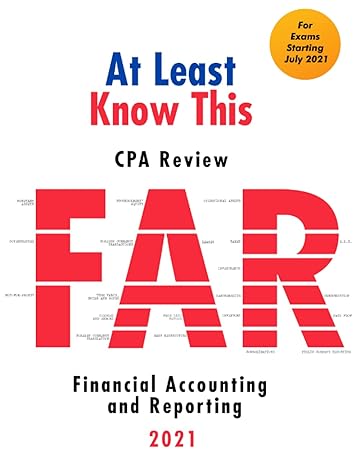Question
You have a population of cockroaches in your kitchen that amounts to 500 adult individuals. You are tired of living with these scavengers, so you
You have a population of cockroaches in your kitchen that amounts to 500 adult individuals. You are tired of living with these scavengers, so you decide to go to the hardware store and buy an insecticide to murder the little devils. You thoroughly spray your kitchen and you are satisfied with the result. Please do some simple calculations below to determine whether your satisfaction is warranted.
1.Remember, youre starting with 500 individuals. Lets assume that your kill rate was 98% effective. How many roaches were killed by your treatment?
500 x 0.98 = __490_____ (number killed)
Individuals remaining = _____10_____
Youre happy for a while. Your kitchen appears to be roach-free. Until one night, a couple of weeks later, you come down to the kitchen at 2:00 AM and its roach-o-rama. Yes, theyre back and its not pretty.
2.How can you explain this resurgence? Give 2 possibilities.
a.
b.
Undaunted, you pick up your trusty can of Raid and spray again and again just to make sure. And yet this time, the result is very different. Were going to assume again that you have a population of 500 roaches in your kitchen. But this time, the kill rate is 10%. OMG!!
3.How did this happen? Write a paragraph explaining how this second result is possible.
a.500 x 0.10 = ________ (number killed) (0.5 point)
b.Individuals remaining = ___________ (0.5 point)
Recall that as diploid organisms, we have two copies of every geneone from your mother and one from your father. It is also the case that MOST genes for resistance are recessive. This means that the gene for susceptibility is dominant and that a resistant organism would have to have two copies of the gene for resistance to show the trait. With these simple ideas in mind, do some more calculations
4.In the original population (described in (A) above, before insecticide treatment), calculate the total number of genes for the pesticide trait in the population. I will calculate the first one. You do the rest.
Number of individuals 500 x Number of copies of gene per individual 2 = 1000 genes for trait
Now, remember that some of the individuals in A. are susceptible and some are resistant
a.Multiply the total number of genes for the pesticide trait by the proportion of susceptible individuals to get the total number of susceptible genes in the population __________ (Hint: you determined this in part A. Second Hint: you can assume that all individuals are homozygous, i.e., that they have only one allele---either the susceptible one or the resistant one).
b.Multiply the total number of genes for the pesticide trait by the proportion of resistant individuals (or determine by subtraction) to get the total number of resistant genes in the population___________
c.What is the percent of both forms of the gene in the initial population? ________
5.Now, do the same calculations for the second population, that was generated after you sprayed for the roaches the first time.
Number of susceptible genes in population___________
Number of resistant genes in population____________
Percent of resistant genes in population___________
Please answer these questions about the results of question 5.
6.Does this result meet the definition of evolution? Explain using the numbers you generated in Questions 1 and 2. (2 points)
7.Assuming that the trend established continues with subsequent sprays, what can you expect to happen in your kitchen if you continue the same treatment regime? Explain. (2 points)
8.Should you move? (1 point)
9.Explain why resistance of bacteria to antibiotics is the same phenomenon in a different species. (2 points)
10.What are the lessons we should have learned about using pesticides and antibiotics? Please consult the Rachel Carson material for further clarification if necessary. (2 points)
Step by Step Solution
There are 3 Steps involved in it
Step: 1

Get Instant Access to Expert-Tailored Solutions
See step-by-step solutions with expert insights and AI powered tools for academic success
Step: 2

Step: 3

Ace Your Homework with AI
Get the answers you need in no time with our AI-driven, step-by-step assistance
Get Started


